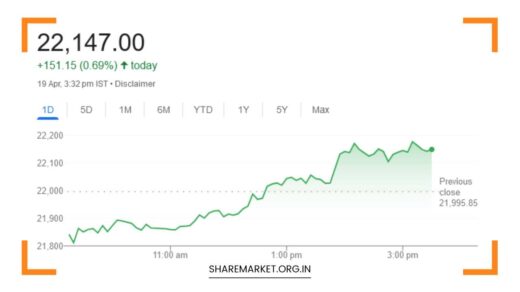Why Suzlon Share Price Getting Down

Suzlon Share Price
In the ever-evolving landscape of the stock market, certain companies find themselves in the spotlight due to a confluence of events and market dynamics.
One such company that has recently captured attention is Suzlon Energy, a key player in the wind turbine manufacturing sector.
This scrutiny comes in the wake of a 3.31 percent decline in Suzlon’s stock on Friday, culminating in a closing value of Rs 39.40 on the National Stock Exchange (NSE).
The primary catalyst behind this downturn is attributed to the MSCI (Morgan Stanley Capital International) readjustment, a significant development that carries both opportunities and challenges for Suzlon Energy and its stakeholders.
MSCI Readjustment: Implications for Suzlon’s Stock
The MSCI readjustment marks a crucial turning point for Suzlon Energy. Under this adjustment, Suzlon’s stock is slated to be incorporated into the MSCI Global Standard Index, joining the ranks of eight other stocks.
The anticipation of this inclusion has stirred the market, leading to a 3.31 percent decline in Suzlon’s stock value.
The incorporation into the MSCI Global Standard Index is expected to result in a passive inflow of $286 million into Suzlon’s stock, signaling potential positive implications for the company’s valuation.
However, the market response to this development has been nuanced. Nuwama Institutional Equities has provided insight, suggesting that a substantial portion of the price impact has already been factored into the market.
This assertion gains credence from the more than 2 percent drop in Suzlon shares on the Wednesday preceding the broader decline on Friday.
The question that emerges is whether the market has accurately priced in the benefits of Suzlon’s inclusion in the MSCI Global Standard Index or if there are additional factors at play that could influence the stock’s trajectory.
Ownership Dynamics: Promoters’ Stance on Stake Increase
The ownership structure of a company is a pivotal factor influencing strategic decisions and, consequently, its stock performance. In the case of Suzlon Energy, insights into the promoters’ intentions provide a valuable perspective.
As of the September quarter, Suzlon’s promoters maintain a 13.29 percent stake in the company. Group Vice Chairman Girish Tanti has recently communicated that, at present, there are no plans to increase this stake.
This decision provides a window into the promoters’ current assessment of the company’s valuation and growth prospects.
While the promoters’ confidence in Suzlon’s performance is evident from their current holding, their decision not to increase the stake prompts further examination.
Are they adopting a cautious approach due to external market conditions, or do they believe the current valuation accurately reflects the company’s intrinsic worth?
Understanding the rationale behind such decisions is crucial for investors seeking a nuanced perspective on Suzlon Energy’s trajectory.
Financial Performance: A Closer Look at Q2FY24 Results
Beyond stock movements and ownership dynamics, Suzlon Energy’s financial performance is a critical barometer of its overall health. The recently released second-quarter results (Q2FY24) reveal a profit of Rs 102 crore.
This positive financial outcome not only underscores the company’s ability to generate returns but also contributes to the overall narrative of Suzlon Energy as a sound investment choice.
Investors often seek companies with strong financial fundamentals, and Suzlon’s profitable quarter adds a layer of confidence for those considering or currently holding positions in the company.
Stock Performance: A Multi-Temporal Analysis
Examining Suzlon Energy’s stock performance over different time frames offers a comprehensive perspective on its market dynamics. In the last one month, Suzlon’s shares witnessed a notable rise of more than 20 percent, reflecting short-term market sentiment.
Simultaneously, the stock has been a standout performer over the last six months, delivering an extraordinary surge of 258 percent.
The year-to-date performance is equally impressive, with Suzlon’s stock experiencing a remarkable rise of 268 percent.
Over the past year, investors in Suzlon Energy have enjoyed a bumper profit of 316 percent, showcasing the stock’s ability to create substantial wealth.
Factors Driving Success: Renewable Energy Trends and Technology Advances
To contextualize Suzlon Energy’s remarkable performance, it’s essential to consider the broader factors driving success in the renewable energy sector.
Wind energy, in particular, has gained prominence as a sustainable and environmentally friendly alternative. Suzlon Energy, positioned in the wind turbine manufacturing sector, is well-poised to capitalize on this global shift toward cleaner energy sources.
Technological advancements and increased awareness of renewable energy solutions have likely played a pivotal role in boosting investor confidence in the company.
The recent dip in Suzlon’s stock attributed to the MSCI readjustment raises pertinent questions about the sustainability of its upward trajectory.
Nuwama Institutional Equities’ suggestion that most of the price impact has already occurred implies that the market may have priced in the anticipated benefits from the MSCI inclusion.
However, as with any investment, there are inherent risks, and investors must carefully monitor how external factors, market sentiment, and potential regulatory changes might influence Suzlon Energy’s future performance.
Risks and Considerations: Beyond the Numbers
While Suzlon Energy has demonstrated impressive growth in recent months, it’s crucial for investors to acknowledge the potential risks associated with the stock.
Market conditions, regulatory changes, and global economic factors can all influence the trajectory of a company’s stock.
The recent decline attributed to the MSCI readjustment prompts a closer examination of how external factors might impact Suzlon’s future performance.
Investors should be cognizant of the dynamic nature of the stock market and conduct thorough research to make informed decisions.
Past performance, though indicative of a company’s resilience and growth potential, does not guarantee future results.
As Suzlon Energy navigates the implications of the MSCI inclusion, investors should stay vigilant, adapt their strategies accordingly, and remain informed about relevant developments.
Conclusion: Navigating the Future
In conclusion, Suzlon Energy’s recent stock performance, coupled with the MSCI readjustment and the company’s financial results, presents a complex and multifaceted narrative.
The wind turbine manufacturing company has demonstrated remarkable growth, providing substantial returns to investors.
However, the recent decline prompts a closer examination of the factors at play, including the MSCI inclusion and the promoters’ stance on increasing their stake.
As investors navigate this dynamic landscape, staying informed about relevant developments and conducting thorough research becomes paramount.
Suzlon Energy’s journey in the stock market is not just a story of numbers; it’s a narrative shaped by global market dynamics, industry trends, and the strategic decisions of the company’s leadership.
As the market digests these developments, investors should remain vigilant and adapt their strategies to navigate the evolving world of Suzlon Energy.

















